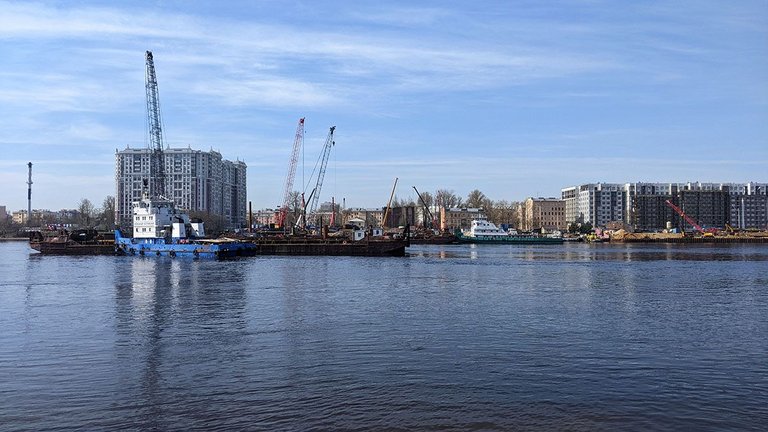
My walk had a definite purpose this time: I was going to see how the construction of the new bridge across the Neva was progressing. This is a very important project for the city. Now the construction is in the initial stage, the foundation stone of the future bridge took its place at the end of 2023.
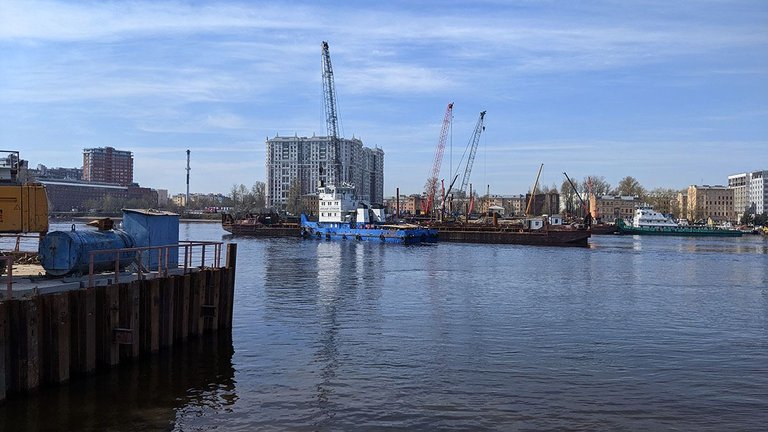

If you have ever been interested in the history of St. Petersburg, you know that the founder of the city, Emperor Peter the Great, was categorically against the construction of bridges. Peter the Great believed that the best transport for quick movement from point A to point B, as well as for the transport of goods in any direction is water transport - fast, convenient, environmentally friendly. That is why all residents of the new city should get boats instead of carriages and move around the city on numerous rivers and channels.
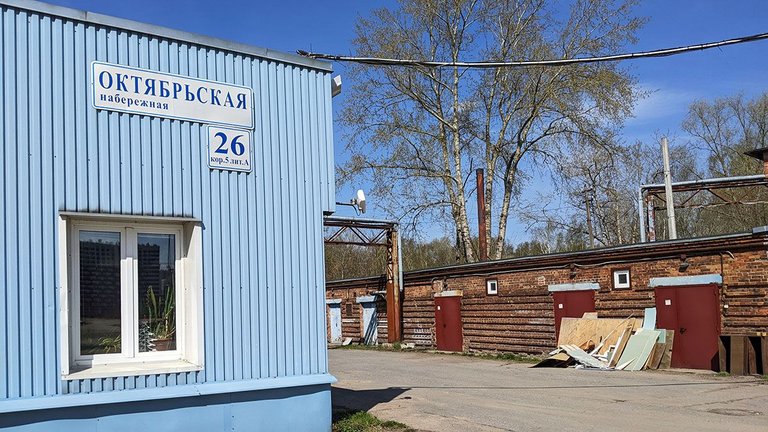
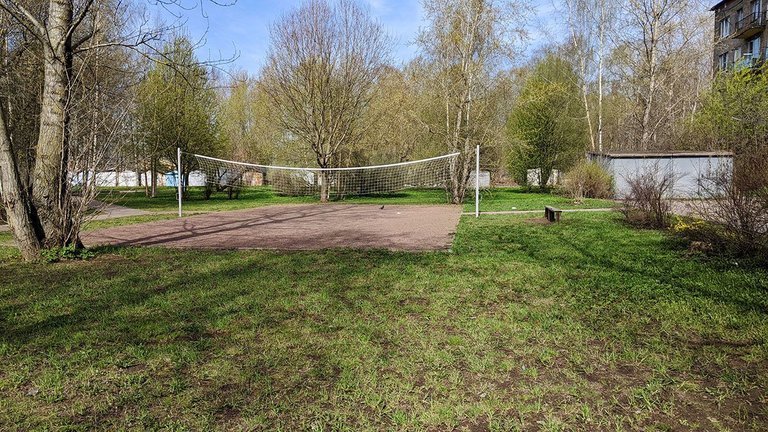
The city, located in the delta of the Neva River, could not do without bridges at all, but for a long time it was possible to use only a temporary pontoon bridge in summer and strong ice in winter to cross the Neva. In spring the different banks of the Neva existed independently of each other. The first stationary bridges across the wide and full-flowing Neva River appeared only in the XIX century. The more intensive the road traffic becomes, the more obvious it becomes that there are not enough bridges in the city. There are several projects for the construction of new bridges, but it is not easy to coordinate the construction of such a complex architectural structure in the historical part of the city.
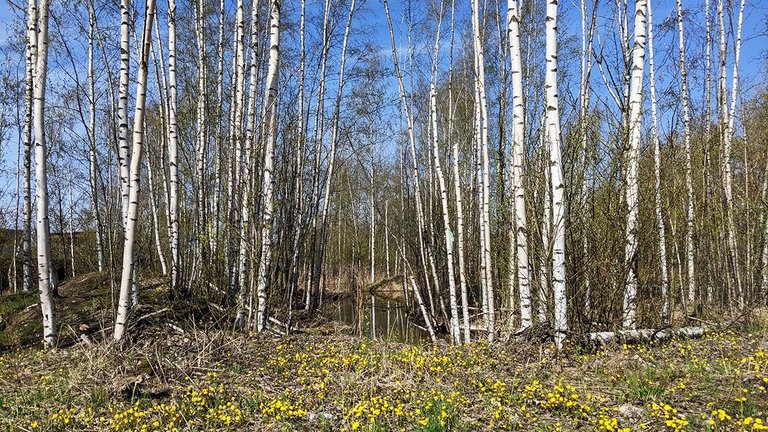
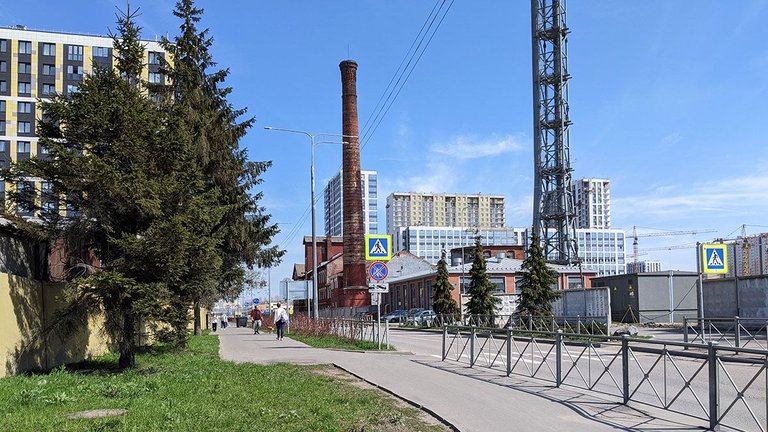
The new bridge will connect the banks of the Neva River on the border of the historical part of the city. This is a former industrial zone, with the historical centre on one side and residential buildings of the second half of the 20th century on the other. Industrial zones are now being freed from factories and plants (they are moving to new sites outside the city boundary), and new residential neighbourhoods are springing up on these territories. I got off the bus on the bank of the Neva River, looked at the construction site and then decided to take a little walk around the territory around the future bridge.
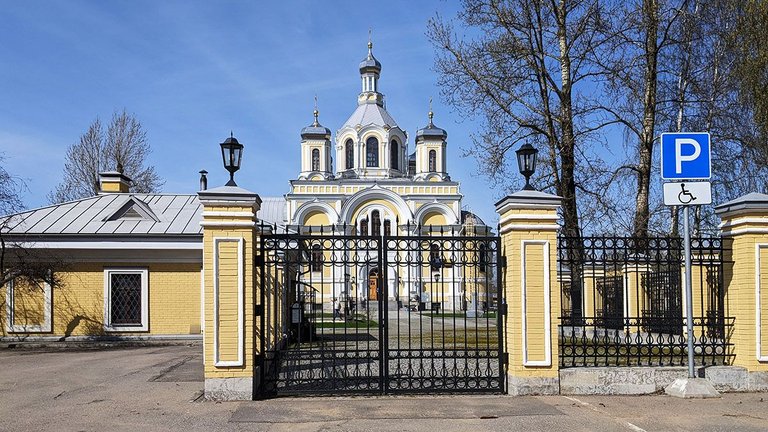

The architectural landscape of this territory is very colourful and diverse. There are old industrial buildings, some residential buildings from the middle of the XX century, modern residential quarters, and the remains of old railway tracks. One can guess that there used to be a railway here only by a small section with preserved old sleepers, the rails have been dismantled long ago.
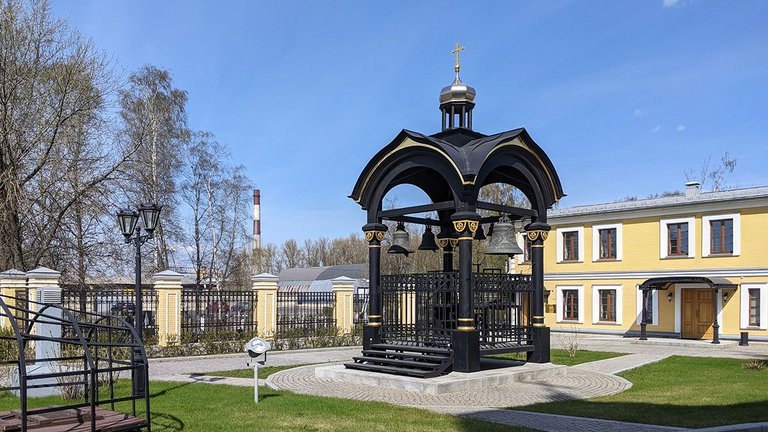
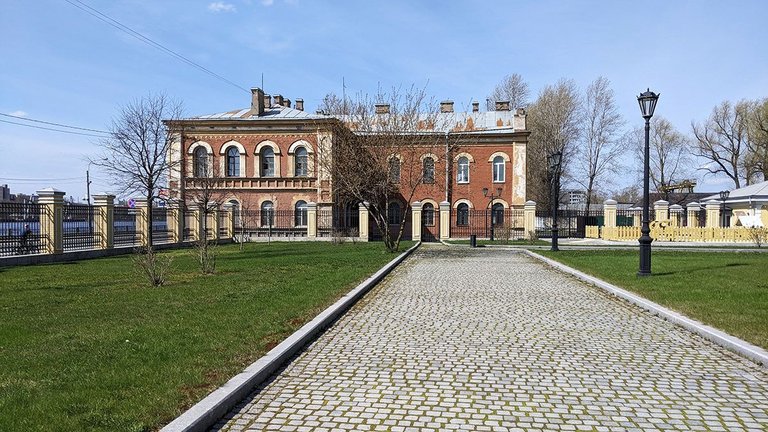
I walked a little further to approach the Church of the Holy Trinity. The land on which this temple is located belonged to the Alexander Nevsky Monastery. The monastery itself is located on the opposite bank of the Neva River. Neva was an obstacle to the active development of this site, nevertheless a church was built here, and a cemetery was located nearby. During the Soviet period the church was closed, the building was handed over for workshops. The church was restored a few years ago, and now services are held there again.
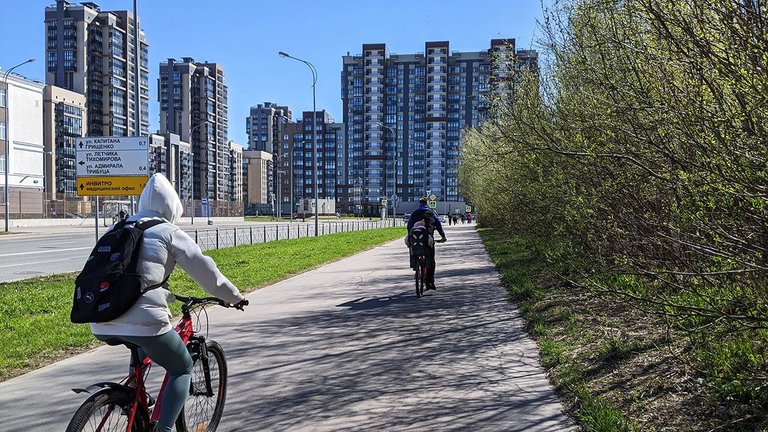
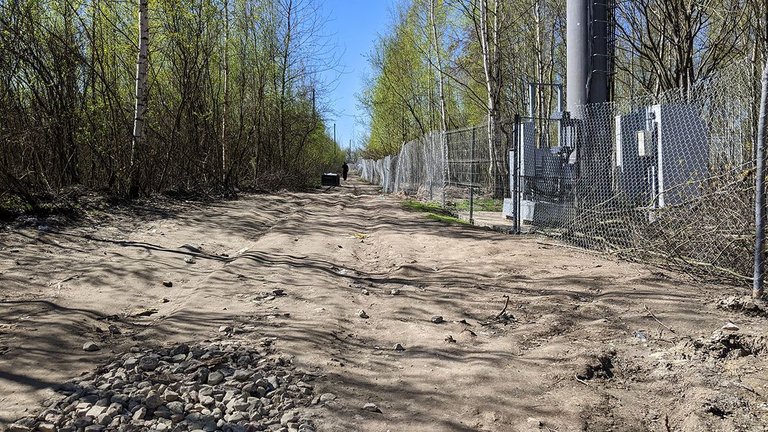
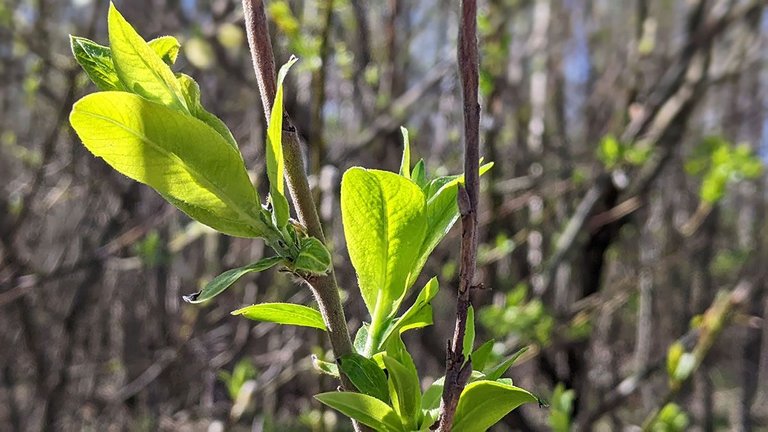

My plans were to see one more construction site: the construction of an embankment near a new residential quarter on the shore of the Gulf of Finland. But here my plans suffered a complete fiasco, the entire construction area was fenced off, and the passage to the beach was closed. Therefore my walk ended in the Pine Glade Park. To be honest, I was even happy about this change of plans - walking in the park is much more pleasant than on the construction site!
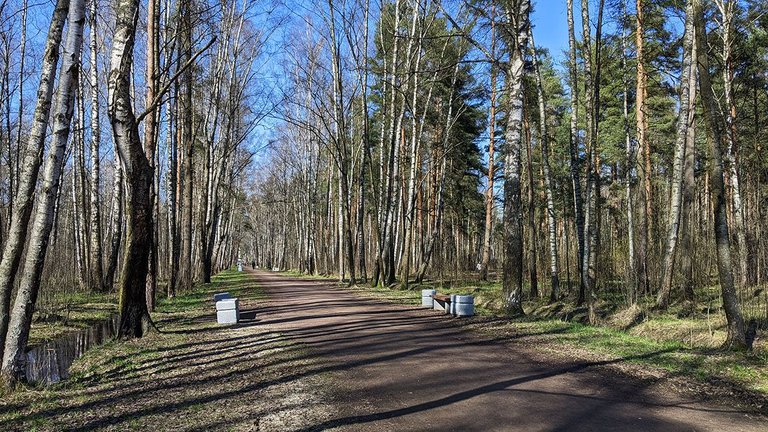
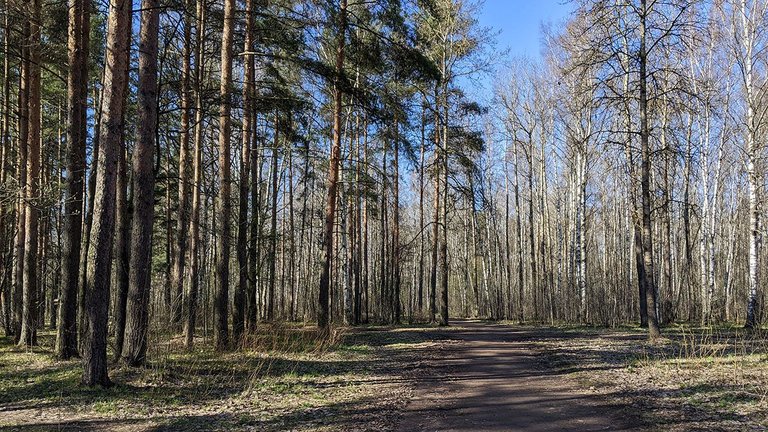
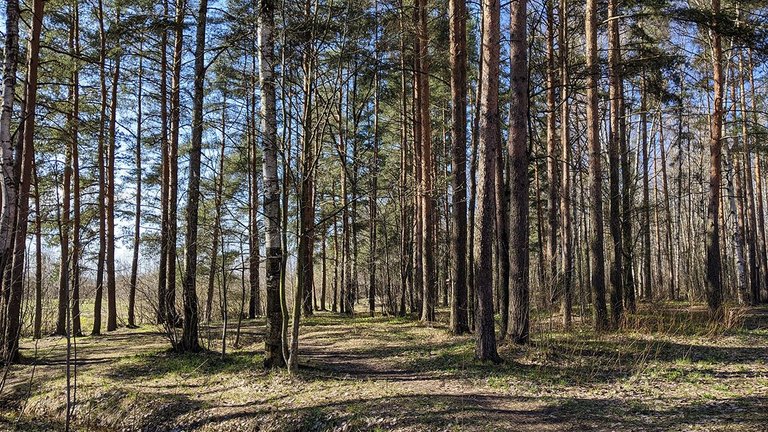
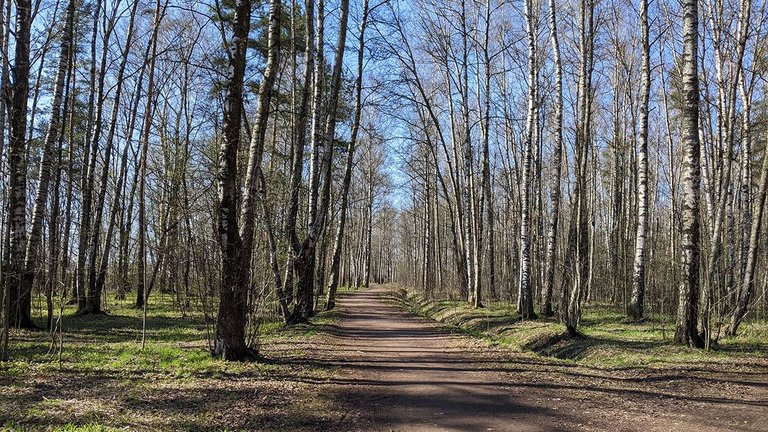
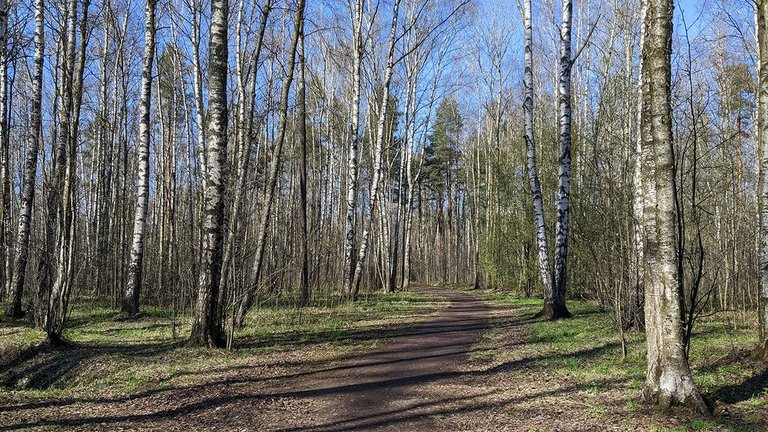

| ○ | ○ |
|---|---|
| Smartphone | Google Pixel 3a |
| Location | Saint Petersburg, Russia |
This is my entry for the #WednesdayWalk challenge by @tattoodjay.




